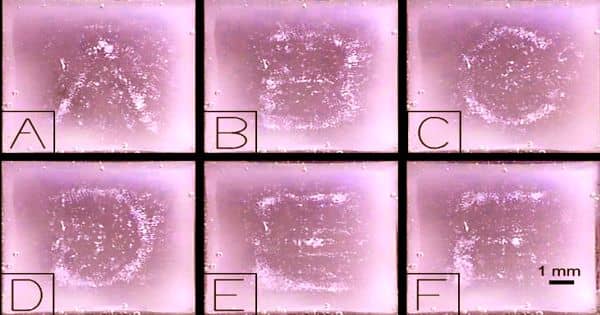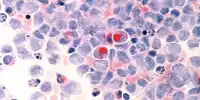Ultrasound therapies become more effective for an ultrasonic projector for medicine
Ultrasound is widely used as a diagnostic tool in both medical and materials science. Chip-based expertise that generates sound profiles with excessive decision and depth may create new choices for ultrasound remedies, which might turn out to be simpler and simpler. A workforce of researchers led by Peer Fischer from the Max Planck Institute for Intelligent Systems and the University of Stuttgart has developed a projector that flexibly modulates three-dimensional ultrasound fields with comparatively little technical effort. Dynamic sound stress profiles can thus be generated with greater decision and sound stress than the present expertise permits. It ought to quickly be simpler to tailor ultrasound profiles to particular person sufferers. New medical purposes for ultrasound could even emerge. The ultrasound destroys the cancer cells by burning specifically the diseased tissue.
Ultrasound therapies may become more effective and easier in the future. A team of researchers led by Peer Fischer from the Max Planck Institute for Intelligent Systems and the University of Stuttgart has developed a projector that flexibly modulates three-dimensional ultrasonic fields with relatively little technical effort.
Ultrasound is broadly used as a diagnostic instrument in each medication and supplies science. It will also be used therapeutically. In the US, for instance, tumors of the uterus and prostate are handled with high-power ultrasound. The ultrasound destroys most cancer cells by the particular heating of the diseased tissue. Researchers worldwide are utilizing ultrasound to fight tumors and different pathological adjustments within the mind. “In order to avoid damaging healthy tissue, the sound pressure profile must be precisely shaped,” explains Peer Fischer, Research Group Leader on the Max Planck Institute for Intelligent Systems and professor at the University of Stuttgart. Tailoring an intensive ultrasound subject to diseased tissue is considerably harder within the mind. This is as a result of the skullcap distorts the sound wave. The Spatial Ultrasound Modulator (SUM) developed by researchers in Fischer’s group ought to assist in the treatment of this case and make ultrasound remedy simpler and simpler in different instances. It permits the three-dimensional form of even very intense ultrasound waves to be various with an excessive decision — and with much less technical effort than is presently required to modulate ultrasound profiles.
High-intensity sound pressure profiles with 10,000 pixels
Conventional strategies range sound fields with a number of particular people’s sound sources, the waves of which might be superimposed and shifted in opposition to one another. However, as a result of the person’s sound sources can’t be miniaturized at will, the decision of those sound stress profiles is proscribed to 1000 pixels. The sound transmitters are then so small that the sound stress is enough for the diagnostic however not therapeutic functions. With the brand new expertise, the researchers first generate an ultrasonic wave after which modulate its sound stress profile independently, basically killing two birds with one stone. “In this way, we can use much more powerful ultrasonic transducers,” explains postdoctoral fellow Kai Melde, who’s a part of the workforce that developed the SUM. “Thanks to a chip with 10,000 pixels that modulates the ultrasonic wave, we can generate a much finer-resolved profile.”
“In order to modulate the sound pressure profile, we take advantage of the different acoustic properties of water and air,” says Zhichao Ma, a post-doctoral fellow in Fischer’s group, who was instrumental in creating the brand new SUM expertise: “While an ultrasonic wave passes through a liquid unhindered, it is completely reflected by air bubbles.” The analysis workforce from Stuttgart thus constructed a chip the scale of a thumbnail on which they will produce hydrogen bubbles by electrolysis (i.e. the splitting of water into oxygen and hydrogen with electrical energy) on 10,000 electrodes in a skinny water movie. The electrodes every has an edge size of lower than a tenth of a millimeter and might be managed individually.
A picture show with ultrasound
If you send an ultrasonic wave through the chip with a transducer (a kind of miniature loudspeaker), it passes through the chip unhindered. But as soon as the sound wave hits the water with the hydrogen bubbles, it continues to travel only through the liquid. Like a mask, this creates a sound pressure profile with cut-outs at the points where the air bubbles are located. To form a different sound profile, the researchers first wipe the hydrogen bubbles away from the chip and then generate gas bubbles in a new pattern.
Researchers around the world also use ultrasound to combat tumors and other pathological changes affecting the brain. The researchers demonstrated how precisely and variably the new projector for ultrasound works by writing the alphabet in a kind of picture show of sound pressure profiles. To make the letters visible, they caught micro-particles in the various sound pressure profiles. Depending on the sound pattern, the particles arranged themselves into the individual letters.
Organoid models for drug testing
For comparable photos, the scientists collaborating with Peer Fischer, Kai Melde, and Zhichao Ma beforehand organized micro-particles with sound stress profiles, which they modeled utilizing a barely totally different approach. They used particular plastic stencils to deform the stress profile of an ultrasonic wave like a hologram and organize small particles — in addition to organic cells in a liquid — right into the desired sample. However, the plastic holograms solely offered nonetheless photos. For every new sample, they needed to make a special plastic template. Using the ultrasound projector, the Stuttgart workforce is ready to generate a brand new sound profile in about 10 seconds. “With other chips, we could significantly increase the frame rate,” says Kai Melde, who led the hologram improvement workforce.
The approach may very well be used not just for diagnostic and therapeutic functions but in addition in biomedical laboratories. For instance, to rearrange cells into organoid fashions. “Such organoids enable useful tests of active pharmaceutical ingredients and could therefore at least partially replace animal experiments,” says Fischer.
















